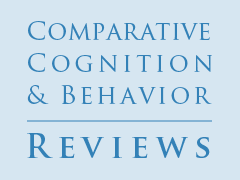Applying Signal Detection Theory to Contingency Assessment
by Shepard Siegel,
McMaster University
Lorraine G. Allan,
McMaster University
Samuel D. Hannah,
McMaster University
Matthew J. C. Crump,
Vanderbilt University
Reading Options:
Download/Read PDF | Add to Endnote
Abstract
In most studies of contingency assessment participants judge the magnitude of the relationship between cues and outcomes. This judgment is a conflated measure of the participant’s sensitivity to the cue-outcome relationship, and his or her response bias. A psychophysical model (signal detection theory, SDT) can be used to dissect the independent contributions of sensitivity and bias to contingency judgment. Results of an experiment concerning cue-interaction (blocking) illustrate the utility of applying SDT to understanding contingency assessment. Most accounts of such assessment are associative (derived primarily from Pavlovian conditioning experiments with non-human animals). A psychophysical analysis of contingency assessment is not an alternative to such associative accounts. The SDT analysis supplements (not replaces) learning principles with psychophysical principles.
Keywords: associative learning, blocking, contingency assessment, cue interaction, psychophysics, signal detection theory
Siegel, S., Allan, L. G., Hannah, S. D., & Crump, M. J. (2009). Applying Signal Detection Theory to Contingency Assessment. Comparative Cognition & Behavior Reviews, 4, 116-134. Retrieved from http://comparative-cognition-and-behavior-reviews.org/ doi:10.3819/ccbr.2009.40012
